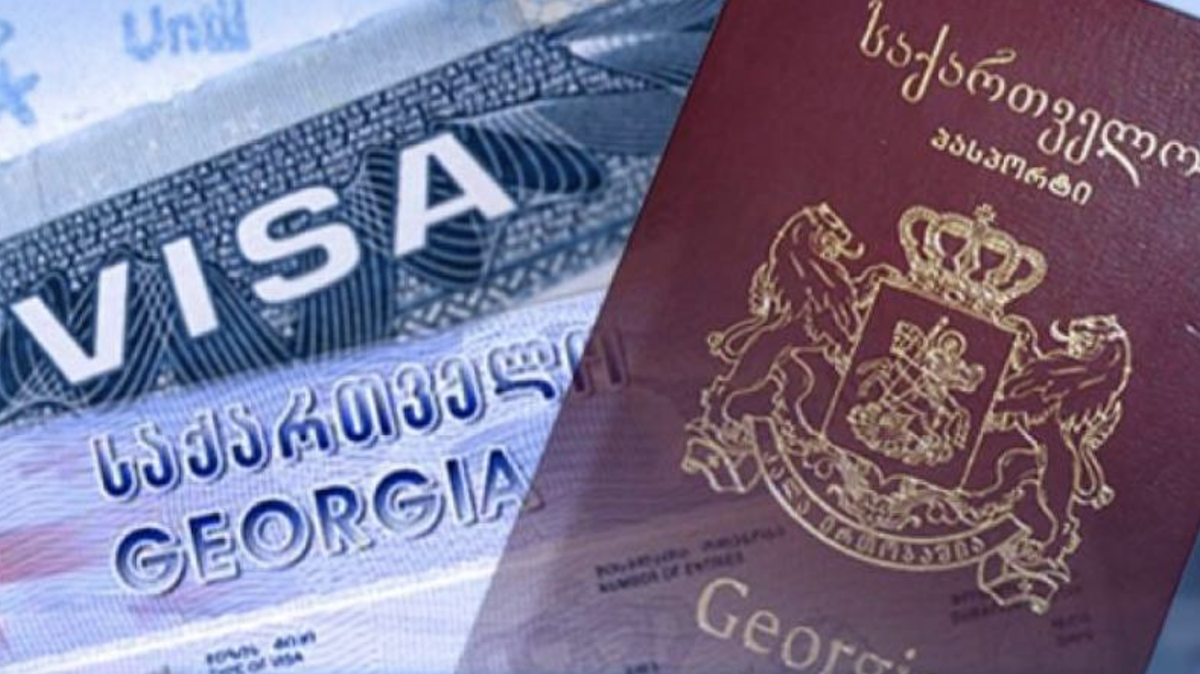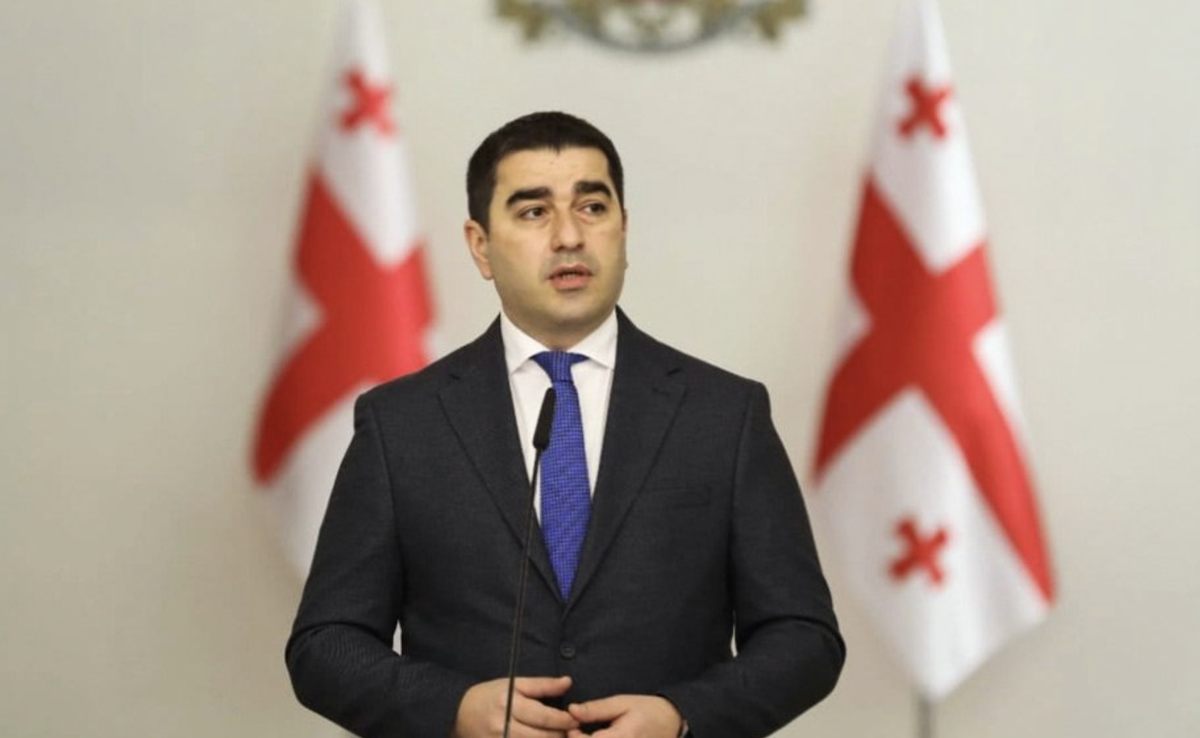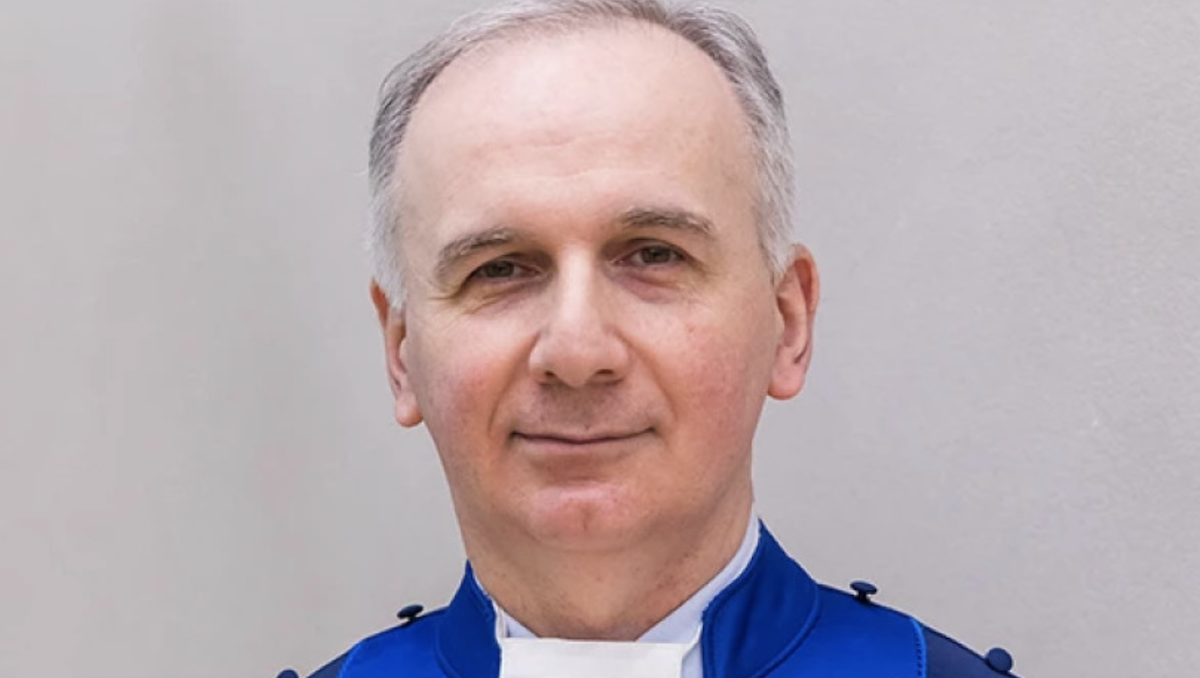“Then people realized that it was necessary not to save themselves, but each other” - how Georgia survived the energy crisis of the '90s
Energy crisis in Georgia in the 90s
For seven months Ukraine has repelled Russian aggression, and Russia has been under severe Western sanctions. Europe has partially abandoned Russian energy carriers. The aggressor is bombing Ukrainian energy infrastructure, and threatening to completely cut off the supply of electricity and gas to the West. Russian media paint an apocalyptic picture of the harsh winter awaiting Europe.
Georgia knows perfectly well what it means to live without electricity and gas. In the 1990s after the collapse of the Soviet Union, the country experienced its worst energy crisis in modern history. There was a major shortage of electricity, natural gas was turned off, people were left without heating, public transport worked intermittently, and problems arose even with food.
Later, in 2006, due to Russian sabotage Georgia again found itself in an energy crisis. But this time not for long and better prepared.
These events forced the inhabitants of Georgia to look for ways to survive in unbearable conditions. JAMnews related how Georgia survived a severe energy crisis.
- How to live when the power’s out. Stories from Abkhazia
- Struggle and Sacrifice: Narratives of Georgia’s Modern History
“Father warmed our bed” – how they fought the cold
When the first energy crisis began in Georgia in the ’90s, Nino Natroshvili was a schoolgirl. She remembers how one day the lights went out, the gas was turned off, and they were left in the dark and cold in a small apartment on the ninth floor of a Tbilisi high-rise building:
“We didn’t know what to do. We didn’t have anything to keep warm at home. It was cold. Lying in a frozen bed at night was hell. I remember how in the evenings my father warmed the bed for my sister and me, and then we went to bed.”
When it went “dark” in Tbilisi, student Manana Iadze lived in a hostel.
“I lived on the ninth floor; there was no elevator, we walked. It became unbearable to stay there, and I moved to Lotkin (a district of Tbilisi) to be with my aunt.”
Both students and teachers sat in jackets and gloves during lectures. If any lecturer had heating at home, they would invite students to their place. There were times when everyone gathered in the house of a student.
“Sigua pie (an apple pie with a minimum of ingredients, named after the former head of government Tengiz Sigua) was very much in vogue then. My friend baked this cake, the teacher came over, and we had lectures,” recalls Rusudan Kvaratskhelia.
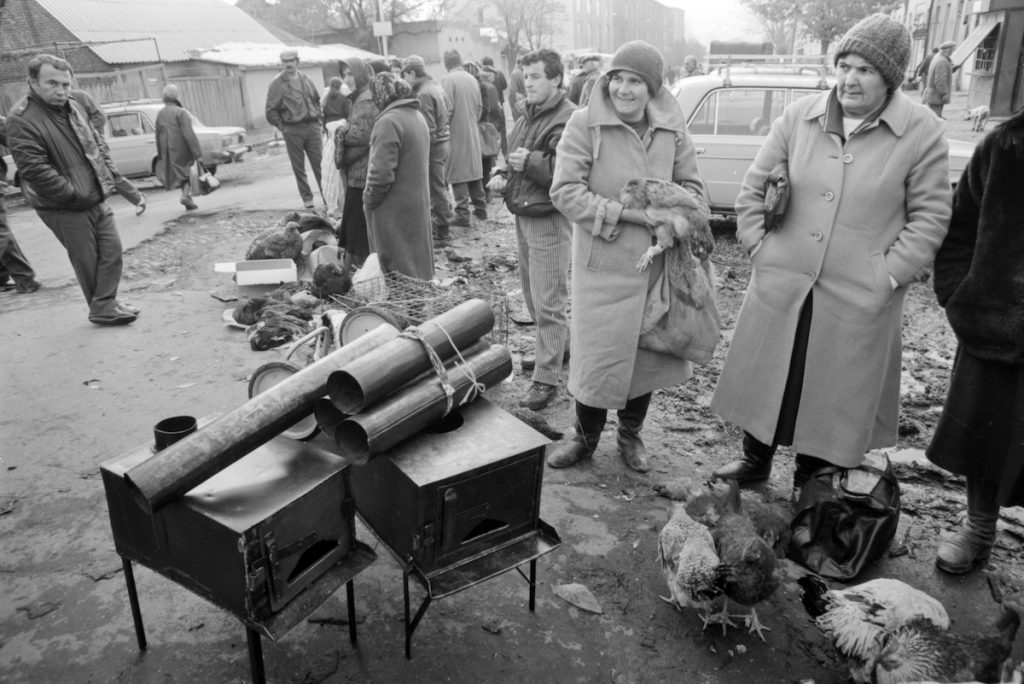
Soon wood-burning stoves appeared in the city markets, and in Tbilisi they began to import firewood and sell it from trucks.
“I remember how in apartment buildings they began to remove the glass from the windows and insert sheets of tin to expose the chimney outside. The whole city was smoky,” Rusudan Kvaratskhelia remembers.
In order to properly install a stove in a city apartment, you need to put the pipe through a cut-out hole. Usually sheets of tin were inserted into the windows for this. Boards and any dried wood burn best in the oven. If bricks are heated on the stove, they can be used to heat the bed. In no case should the fire in the furnace be left overnight – there is always the possibility of an accidental spark.
“At that time eight people lived in one house – my father, my mother, sister and me with my family, my wife and three children. It was a private house, we had a potbelly stove, a wood-burning stove. The house had five rooms, but we lived in one room. It was very funny when they argued who would get into bed first, because the bed was cold and someone had to warm it up,” photographer Guram Tsibakhashvili, a photo chronicler of that period, remembers.

Then gradually so-called kerosene stoves, imported mainly from Turkey, appeared in the markets. On the streets of Tbilisi there were lines for kerosene.
“I remember how my mother cooked khinkali on these “kerosene stoves”. Can you imagine how long it took? She even baked us cakes. I think that’s when she discovered that cake biscuits are best baked on low heat. Then, in 2006, when the gas was turned off again, my mother pulled out this red kerosene stove from somewhere,” Nino Natroshvili recalls.
Smoky lamps, candles, “left” lines
“Recently I was at a performance, there were children and when the lights went out in the hall, one of the children shouted: “Mom, how great!” I remembered my childhood when we had this reaction when the lights came back on,” Nino Natroshvili says.
Nino spent her final school years by the light of a lamp waiting for the electricity to be turned on.
“I still don’t like kerosene lamps. If I see them somewhere, even in a vintage cafe as decoration, I don’t like it. I still remember the smell of kerosene, how it burned my eyes. ”
Nino’s family was not privileged, so their house was lit either by a lamp or candles. Those who were well connected, or more fortunate, stole electricity from government facilities. Rusudan Kvaratskhelia recalls that people had electricity in their homes from traffic lights and even from the metro. “I am sitting on the subway line” was an expression of privilege at the time:
“The whole city was entangled with “leftist” (stolen, illegal) lines. If there was a light in the building, you knew that someone important or influential lived there.”
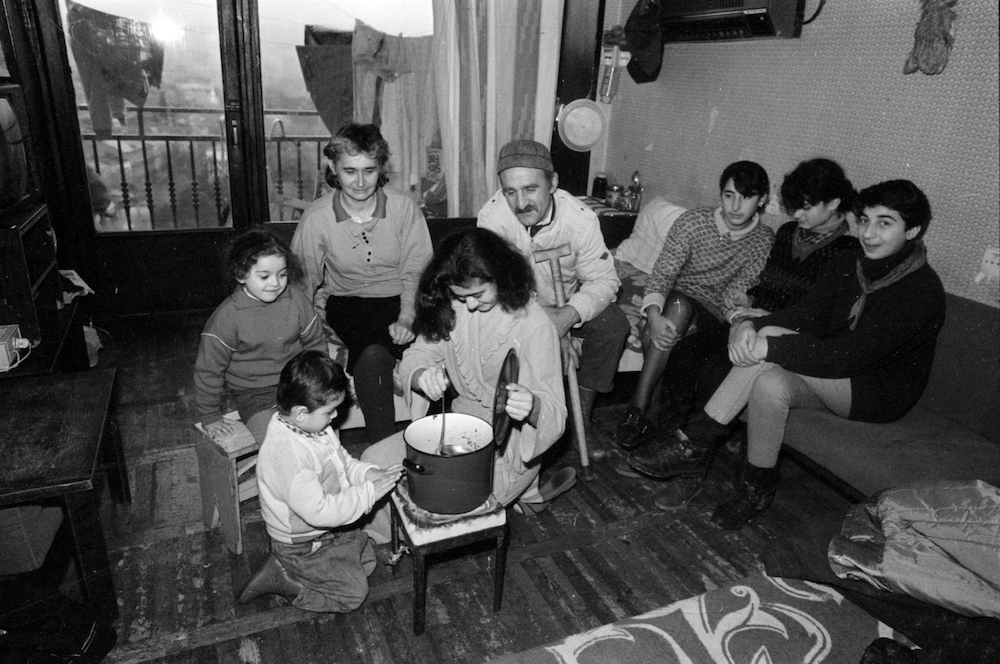
Manana Iadze also had “stolen” light when she finished her studies and returned to the city of Akhaltsikhe in southern Georgia:
“There was a military headquarters behind my house. I had an acquaintance. I made a deal and set it up. Then they showed a Brazilian series, and in the evenings the whole district gathered at my place. My house was like a club.”
Most institutions of state and strategic importance had electricity, but not in districts and villages; often there was no electricity even in hospitals. And not only in the ’90s.
In the winter of 2006, when a gas pipeline and two power lines were simultaneously blown up in Russia and Georgia was left without electricity, 18-year-old Keti Zubashvili was eight months pregnant.
That year there was a severe winter in Tbilisi. The husband’s family took Keti to the village of Achabeti in the Didi Liakhvi valley near Tskhinvali in South Ossetia.
A rich father-in-law in the village had firewood and a generator. Keti stayed in the village for a long time.
At dawn on February 6, Katya went into labor. At the time it was not possible to leave for Tbilisi via the South Ossetian capital Tskhinvali due to political tensions. The bypass road that brought Keti from Tbilisi to the village was very long, there was a lot of snow, and it was risky to take the woman in labor this way. 18-year-old Keti was brought to the hospital in the village of Kurta to give birth:
“There was no light, only a generator. There was no anesthesiologist on site, so I had to call one from Tskhinvali. It took time. If I gave birth naturally, they would help me; if I needed a caesarean section, no one would take responsibility for what happens. My parents signed the agreement. I already had labor pains. There was no other way.”
Keti safely gave birth to a son.
“When I and my first child were discharged from the hospital a week later, we reeked of smoke,” recalls Keti.
It was always necessary to have a supply of candles or refilled kerosene lamps in the house. The wealthiest families bought generators for themselves. However, the energy of a small generator was usually enough for only a few light bulbs and a TV. And of course the generator produced a lot of noise and used a lot of fuel.
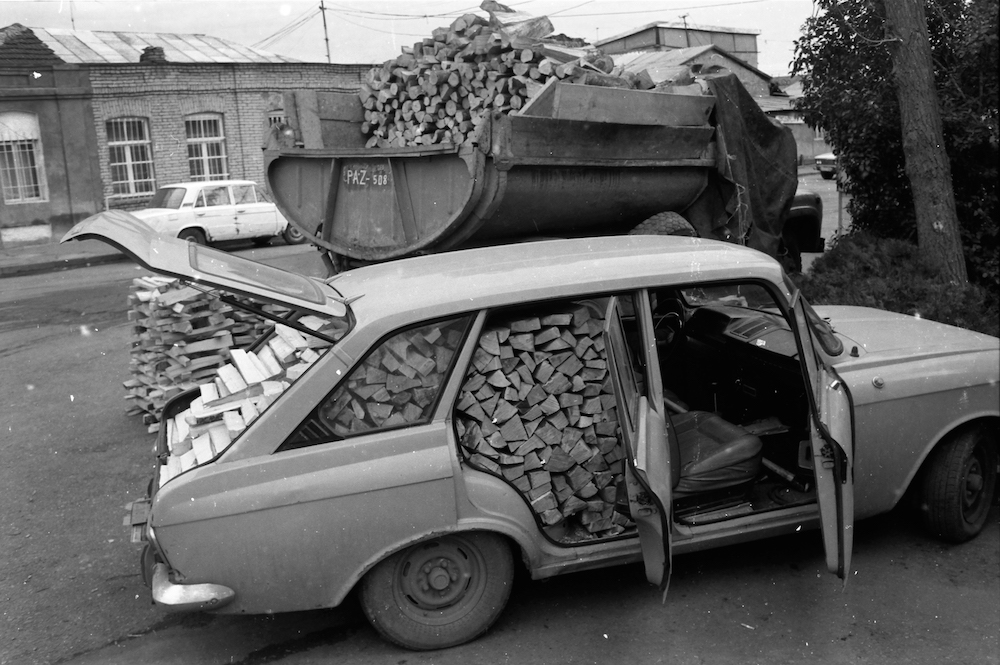
Stuck in a tunnel, miles on foot, people hanging on a trolleybus
There were few cars in Tbilisi in the ’90s most of the buses were old and often broke down, the metro often stopped due to lack of electricity, and trains got stuck in the tunnel. The most popular form of transport was the trolleybus. Those who could not get inside hung on the doors or climbed onto the roof.
Shortly before the crisis, Guram Tsibakhashvili bought a bicycle for his son. Then, when everything stopped in the city, he realized that this bike would be the best way for him to get around.
“In 1992-93, I cycled all over the city. I had a job on Jikia street and a house on Kukia street, on the other side of the city. So I got on my bike, rode, and if there was no electricity and no work, I would come back.”
Student Rusudan Kvaratskhelia, who at that time lived with her family in Tskneti, a suburb of Tbilisi, hitchhiked to Tbilisi University for two years:
“An old broken-down bus went from Tskneti to Tbilisi. Many people lived in Tskneti, and there was never enough space on this bus. I had to wait for hours on the street for it and I could not even stick my nose into it. I also remember the days when it snowed, nobody put salt on the roads, cars couldn’t drive, and I walked up the slope. I would get to the university in exactly two hours and twenty minutes.

Manana Iadze, who at that time was already a graduate student and moved from the Campus to the suburb of Lotkin to her aunt, got to the university on foot in 2.5 hours:
“I was walking cold, all blue, tired, I didn’t even want to listen to lectures, and then I had to go the same way back. My toes were freezing.”
“Washing was a luxury. The whole family washed on the same day”
In the 1990s, water supply to the residential areas of Tbilisi was also intermittent.
Residents of the highest floors in apartment buildings suffered the most – often the water did not rise above the second or third floor, and then only on schedule.
When water was given, family members with vessels of all sizes stood in line for water at the neighboring entrance.

“Our bathroom had a window and we could bathe in the daylight, but I know neighbors who even bathed in the daytime by candlelight because the windowless bathrooms were dark. There were bathing days in our family – on this day all family members had to bathe.
Mother heated water with buckets using a boiler. I’ve always been afraid of this boiler. There was always an argument about who was the last to go to the bathroom, because the bathroom was warmest at the end.”
Life hack 3. When water comes intermittently, you need to make as much supply as possible. Stock up on a variety of containers – buckets in which water can be heated, basins, etc. Taking a shower in those days was a luxury; water was heated either on the stove or with a boiler and washed, pouring it on oneself from a ladle.
Stoves in the entrances and neighbors’ dinners
Soon after the crisis began, handicraft electric stoves with coils appeared in Tbilisi, which were used both for heating and cooking.
The spiral often burned out. Those who knew how repaired the spiral by connecting its two burnt ends together. This continued until there were still “living places” on the spiral.
Those who did not have a stove or wood-burning stove at home had to cook on shared stoves in the stairwell.
Leyla Merebashvili recalls how one day the neighbors bought a wood-burning stove with common funds. A black stove on small legs was placed in a common space.
“There was a schedule, we knew who should cook dinner when. We warmed ourselves there and, of course, we knew who was eating what. I remember the days when my mouth watered when the neighbor cooked delicious food. We rarely had meat in our family, but there was no shortage of potatoes and beans.
Nino Natroshvili recalls that neighbors often got together to cook food or just spend time.
“Whoever had something brought it. Obviously, it was not butter or meat, but someone had jam, someone had compote, someone was baking cookies, or the mothers gathered everything and baked cakes for us together. My family had no problems with food, but they had heating, and where everyone was getting warm, we were there too.”
Rusudan Kvaratskhelia recalls how Georgian First Channel employees cooked dinner at work. At that time, Rusudan worked on television in parallel with her studies.
“Then television was a real paradise – there was light, electric stoves, it was warm. Employees prepared meals at work and took them home.”
How to have fun in dark and frozen Tbilisi
Despite the severe crisis, life in Tbilisi continued.
“There were weddings and commemorations, but they were more budgetary, and weddings were less fun,” Guram Tsibakhashvili says.
In Tbilisi young people lived for music. Among them was the musician and actor Lado Burduli. He hosted concerts and fashion shows at his home. Photographer Guram Tsibakhashvili filmed these evenings:
“These concerts and fashion shows were often held by candlelight. Even if there was electricity, it was suddenly turned off and you had to be ready.”
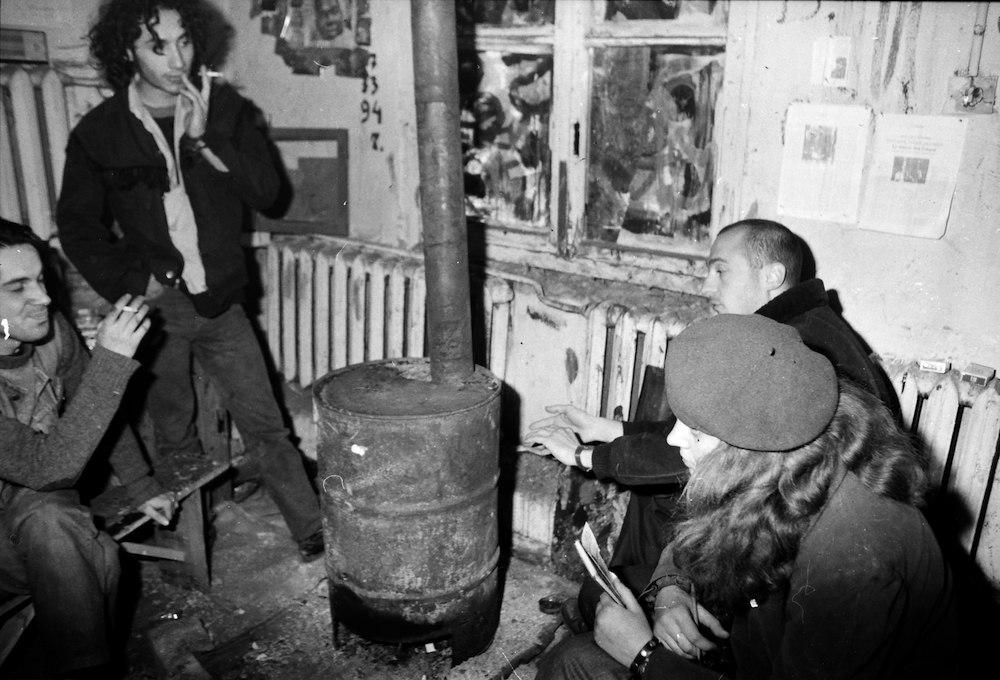
Nino Natroshvili remembers his birthdays like this – by candlelight, accompanied by piano and guitar.
“We had a lot of fun, we danced. Then everyone who could play the piano or the guitar was very popular. Then, a little later, battery-powered tape recorders appeared, we rewound the cassettes with a pencil so as not to waste batteries. We figured out that if the batteries were low, they could be shaken and would still work for a while.”
How did Tbilisi survive?
“People are always trying to survive; we cut down trees together, a lot was destroyed, half of the country sold everything they had to survive the winters,” Guram Tsibakhashvili rues.
“People realized that it was necessary to save not only themselves, but also each other. I have one photo: a fire is burning in the yard, there are three boilers and something is being cooked, probably potatoes or beans. It was an example where everyone realized that one cannot survive alone.”
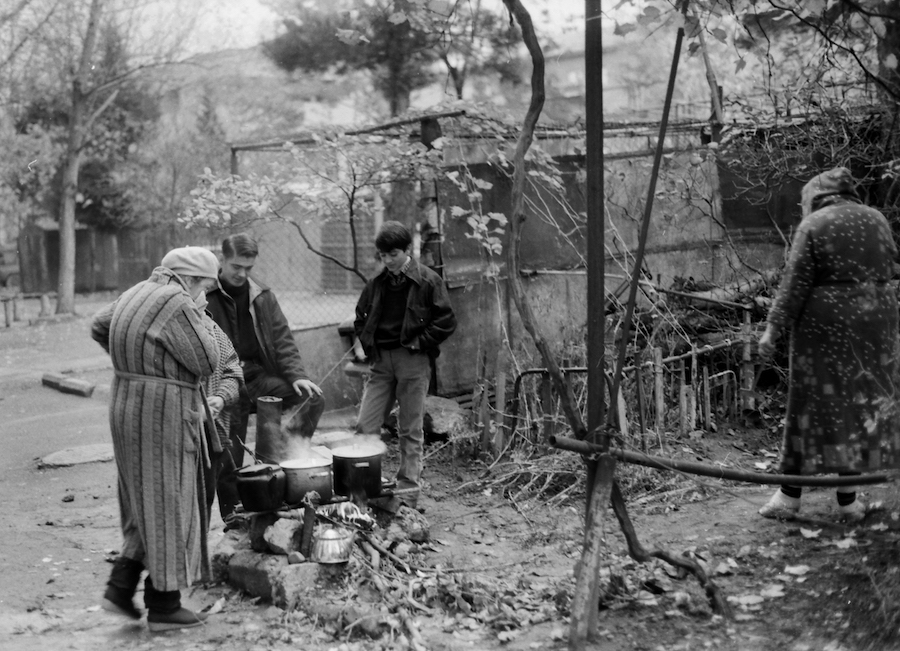
Others also remember such scenes:
“I don’t like that in the end they somehow began to romanticize the ’90s. This is a very painful experience for me. Yes, we survived, we learned to cope, but it was a very traumatic experience,” says Rusudan Kvaratskhelia, who remembers crying in 2004 when she returned from Russia to Tbilisi before the New Year and saw three decorated Christmas trees on Rustaveli.
“In 1997 my husband, who was then working for the Associated Press, was transferred to Russia. I went with him. When I arrived in Russia, the first shock was the dazzling street lighting. I remember crying. And then I cried a second time when I returned to Georgia in 2004 and saw the lights wrapping around four trees on Rustaveli. I was so happy that there was light outside.”
With the support of “Mediaset”











